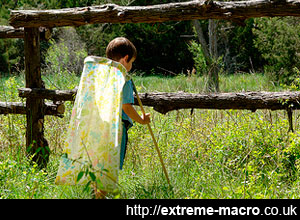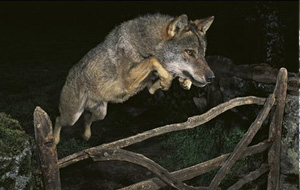Catching Insects
by Johan J Ingles-Le Nobel
Last updated August 31, 2017
Entomologists have been successfully catching insects using specialised insect traps for dozens of years, and most of these can either be bought or made for a fraction of the cost. They work really well too!

Macro ethics seem to me to be largely a matter of common sense. If the species is rare then I wouldn't want to do anything that might cause it harm. Catching those insects might do that, for example disturbing it causing it to stop producing eggs. That doesn't strike me as either moral or far sighted.
Be Responsible!
Macro ethics seem to me to be largely a matter of common sense. If the species is rare then I wouldn't want to do anything that might cause it harm. Catching those insects might do that, for example disturbing it causing it to stop producing eggs. That doesn't strike me as either moral or far sighted. Sensible people catch the minimum necessary for the purpose intended and no more.
On the flipside though, insects are not an entirely uncommon creature, and where there is enough quantity to make no difference to the insect's success, then I think it's ok to catch them. There are many different views on this and it's something that can probably be argued till the cows come home, but being sensibly responsible seems to be a perfectly reasonable middle way to me.
Be Honest!
Dubious photography ethics: the winner of the Wildlife Photographer of the Year award in 2010 was disqualified after judges ruled that the featured wolf was probably a model. Jose Luis Rodriguez strongly denies this charge.
There's nothing specifically wrong with photography manipulation techniques or photography aids to attract insects, as long as you're honest about it and declare the use of those techniques.
You don't want to be the guy whose photo receives national media attention because his photo is disqualified because he was judged to have used a trained animal. Natural wildlife photography is unaltered and unposed, ie natural. It's not rocket science.
As a photographer, it is part of photography etiquette to be honest and transparent about the methods used. If the image was posed or made in a studio, then it should be clearly written up as such and not passed off as taken in the wild. Studio photography is not nature photography. You'll be caught out in the end anyway - there is a good article worth reading here about this fake macro going on.
Sweep Net for collecting macro specimens. Weevils, plant bugs, leafhoppers, beetles, spiders, wood wasps and snails are all commonly caught in a sweep net. Rough grassland is especially effective and for meadow insects, a sweep net is a must. Expect to pay about £50 for a good sweep net.
Catching Insects
If you're trying to actually catch the insect rather than find them to photograph them in the field, many types of insect trap are around. A lot of success will be had in meadows with sweep nets, in the garden with a pitfall trap, at night with a homemade MV Robinson moth trap, in forest clearings with a baited butterfly trap and by beating trees and bushes for insects. All these contraptions are nothing more than entomologists have used for years and they work exactly as advertised. Insect lures work well also.
Planting for Insects
You could also always plant your own vegetation for insects and the web is not short of webpages suggesting plants for insects. But most pages just talk about small plants, whereas planting a small tree that grows up and is the same as having a 100m insect-attracting border in the garden is surely a much more space-efficient manner in which to find insects. Yes, such a tree exists, mine is superb.
Downloads
Related Articles







